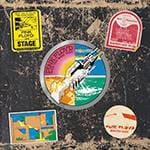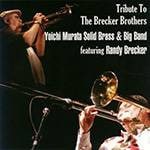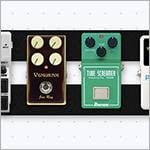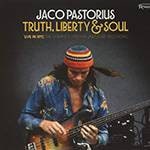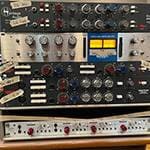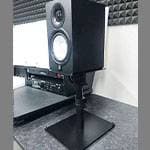Mid-1980s - Emergence of FM Sound Generators
With Yamaha providing FM sound chips, FM sound sources were adopted for use in arcade and PC games. Compared to the PSG sound source, which mainly used square waves to carry out its body of work, the FM sound source was able to handle instrument-like sounds with a plethora of tonal variations, and musical freedom dramatically increased.
1984 NEC PC-6001mkIISR / PC8801mkIISR
YM2203 (FM sound source + SSG (PSG equivalent)) The FM sound source section had 4 operators and 3 simultaneous sounds. This chip was used not only in PCs but also in arcade games.
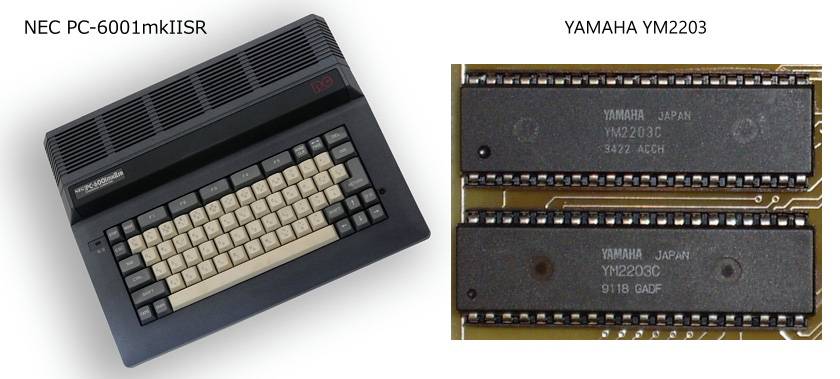
PC-6001mkIISR, CC BY-SA 4.0 (Referenced from Wikipedia)
YM2203, Public domain (Referenced from Wikipedia)
1987 Arcade game Capcom Street Fighter, etc.
YM2151 FM sound source, 4 operators, 8 stereo simultaneous tones, FM sound source for MSX, but used in many arcade games from this era.
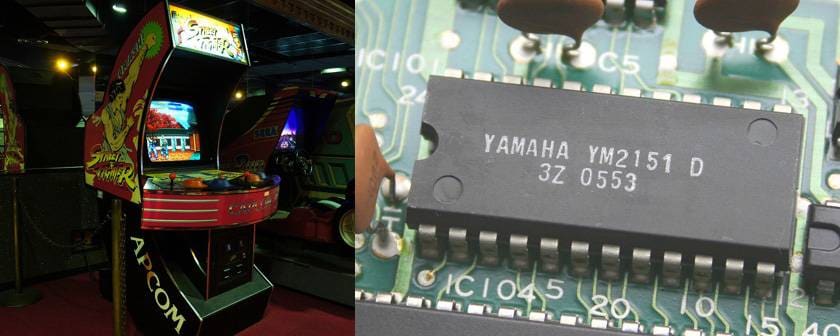
Streetfighter, CC BY-SA 3.0 (Referenced from Wikipedia)
YM2151, CC BY-SA 3.0 (Referenced from Wikipedia)
1987 Sharp X68000
This computer was in the vein of Sharp's X series and was very high performance for its time. Any gamer's house had this computer. The sound source was the same as above, the YM2151.
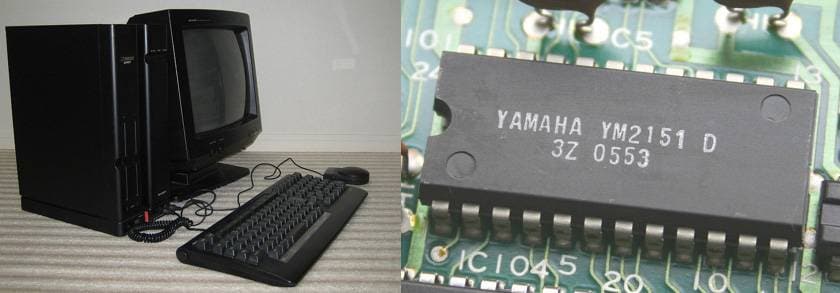
X68000, Public domain (Referenced from Wikipedia)
YM2151, CC BY-SA 3.0 (Referenced from Wikipedia)
1988 Sega Mega Drive
Sega's Mega Drive is a video game console with multiple sound sources: FM (YM2612), PSG (DCSG (SN76489)), and PCM + noise. The Sega Saturn, released in 1994, also continued to include FM sound sources.

Sega-Mega-Drive, Public domain (Referenced from Wikipedia)
YM2612, CC BY-SA 3.0 (Referenced from Wikipedia)
Handheld Game Console
1989 Nintendo Game Boy
Basically, it’s a PSG-type sound centered on square waves, but it’s often used in chiptunes due to its compact size.

Nintendo Game Boy, Public domain (Referenced from Wikipedia)
DMG, CC BY-SA 4.0 (Referenced from Wikipedia)
The chip is a Sharp LR35902. It has 2 channels of square wave + 1 channel of waveform memory source + 1 channel of noise, and stereo playback was possible by using earphones. The waveform memory can read and sound any one cycle of waveforms. In “Pokemon Pikachu,” there is a part where the player says Pikachu, and the waveform memory is used to forcefully play a short PCM sound. I own both the Game Boy and the Pikachu game, so when I play it now, it is quite noisy. I think it was a hot topic at the time because Pikachu could talk.
1990s Games using MIDI
The use of MIDI standard GM sound sources began in the game industry. This made it possible to create orchestral acoustic ensembles that could not be achieved even with FM sound sources
1987 Roland MT-32 LA sound source + PCM sound source
This is a sound source before the GM standard, and the GM sound source standard is based on it. The sound source itself is a hybrid of LA and PCM sound sources. The specifications of the sound source are basically very similar to those of the GM sound source. It has 32 simultaneous sounds, 8 parts + rhythm, 128 voices, and 30 rhythm sounds.
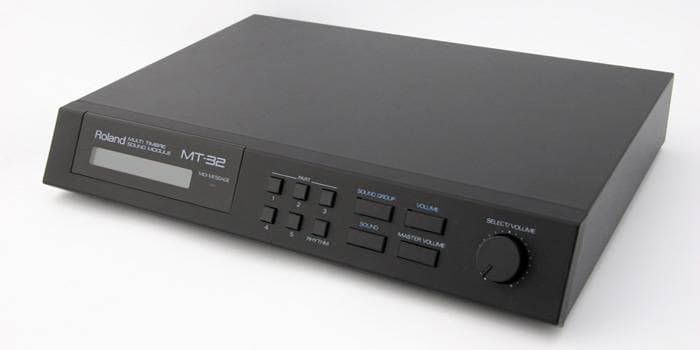
MT 32, Public domain (Referenced from Wikipedia)
1991 GM Sound Source PCM Sound Source
The GM sound source was widely used, but it had to be prepared separately as a sound source for early PC games, which was a costly hurdle to overcome.

Excerpt from Roland SoundCanvas catalog
Roland SCC, CC0 (Referenced from Wikipedia)
1994 SoundBlaster AWE32 E-MU Systems sound source wavetable soundfont
GM sound sources built into sound cards. GM sound sources soon became inexpensive and software-based.
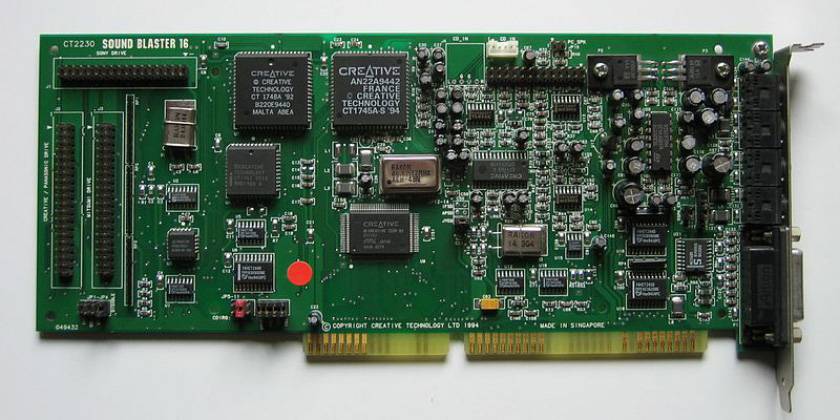
Creative Sound Blaster, CC BY-SA 3.0 (Referenced from Wikipedia)
1990's: PCM in sequence
The 1990s were a period of warfare for home video game consoles. Basically, the trend was toward a hybrid of chip-based sound sources and data playback, but the use of chip-based sound sources gradually became unnecessary. The advent of CD-ROMs also had a major impact.
1990 Super Nintendo Entertainment System SPC700 (S-DSP)
Sony's sound chip was independent of the CPU. The specifications were PCM sound source with a sampling frequency of 32 kHz and 8 simultaneous 16-bit stereo sounds. The waveforms are built into the chip and compressed by BRR. The 64 KB of RAM allowed for a large amount of data to be read. Effects such as reverb and delay were also included. Although the resolution was lower, the sound was close to that of PCM instruments.

Nintendo-Super-Famicom, Public domain (Referenced from Wikipedia)
S-DSP A, CC BY-SA 3.0 (Referenced from Wikipedia)
1994 Sega Saturn FM, PSG, PCM
This is the Sega of sound source festivals. Equipped with a Yamaha SCSP 315-5687 (YMF292-F), it was capable of 32 channels of 16-bit PCM sound sources, 8 channels of FM sound sources, and audio DPC.
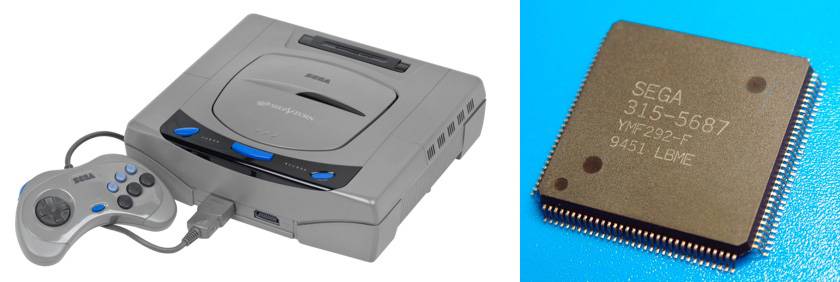
Sega-Saturn, Public domain (Referenced from Wikipedia)
315-5687, CC BY-SA 3.0 (Referenced from Wikipedia)
1994 PlayStation SPC
Sony, pushed by Nintendo, decides to develop its own game platform: the SPU. Sampling frequency: 44.1 kHz, 24 simultaneous sounds, built-in sound source that recorded tones and pitches as program data and played them back in the same way as sound effects, etc. Streaming playback from CDs was also introduced.

PlayStation, Public domain (Referenced from Wikipedia)
CXD2938Q, CC BY-SA 3.0 (Referenced from Wikipedia)
1998 Sega Dreamcast
Sega has put a lot of effort into sound every time. It was equipped with Yamaha's latest GM sound source extension, the XG sound source, which could play PCM sound sources plus ADPCM on a 32-bit RISC processor (ARM7 AICA 45 MHz) made by Yamaha.

Dreamcast, CC BY-SA 3.0 (Referenced from Wikipedia)
Super Intelligent Sound Processor, CC BY-SA 3.0 (Referenced from Wikipedia)
1999 BANDAI Wonder Swan
The main unit price of 4,800 yen was realized with dead electronic components. Digital sound source 4ch stereo, waveform memory sound source, 1ch available as PCM sound source.
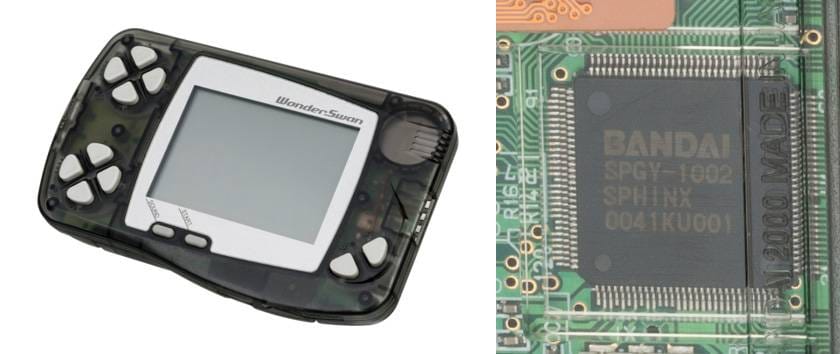
WonderSwan, CC0 (Referenced from Wikipedia)
WonderSwan, Public domain (Referenced from Wikipedia)
2000 PlayStation2
Sony's technological prowess is on display. The graphics were stunning, but the sound was also very good: SPU2 + SoftSynth (WebSynth) sampling frequency was 44.1 and 48 kHz, with 48 simultaneous tones.

PlayStation-2, Public domain (Referenced from Wikipedia)
Motherboard, Public domain (Referenced from Wikipedia)
2000s: The Last Game Console with a Built-in Sound Source?
In the 2000s, major video game consoles discontinued dedicated sound sources and became software-based.
2001 Game Boy Advance (SP)
The sound source was built in for compatibility, using a dual CPU (ARM7TDMI and custom Z80). The sound source can handle PCM in addition to the conventional PSG system.

Game-Boy-Advance, CC BY-SA 4.0 DEED (Referenced from Wikipedia)
The Game Boy Advance is believed to be the last major video game console to feature a hardware sound source. From this point on, sound chips were no longer needed, and the switch was made to PCM playback.
In this way, the only sound sources linked to musical instruments are FM and GM sound sources, while the rest seem to be simple sound sources derived from PSG, which were made specially for games. The PSG sound source system, which doesn’t overlap with instruments, has a distinctive character, and when I hear this sound, I can only associate it with games. The low-resolution, noisy square wave sound was not favored as a musical instrument sound, but it was used for a long time in the game world because of its cost-effectiveness, so it stayed. However, it is now being revived in the field of music as chiptune because of its retro sound. Once again, the value of sound is not in the specs, but in what it carries.
Current electronic games basically play audio data. And like PCs, hardware specs have improved. A lot can be achieved with software and it is even possible to have synthesizers inside the game. The PSG, FM, and GM sound sources, which once disappeared, may be emulated and revived as software sound sources in the future.
~ Items to enjoy game sounds ~
GAMEMASTER AUDIO / RETRO 8BIT SOUNDS
The “sound & person” column is made possible by your contributions.
For more information about contributions, click here.





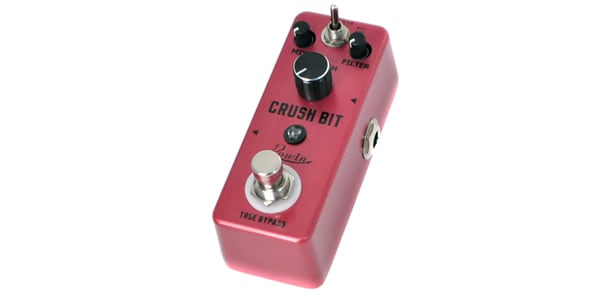
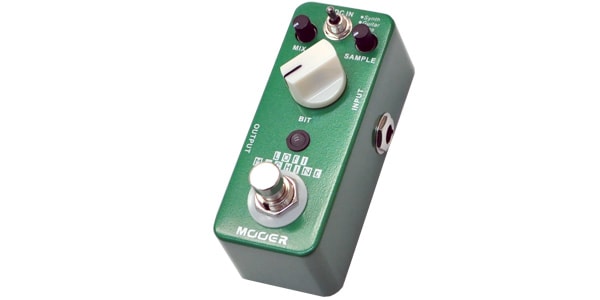
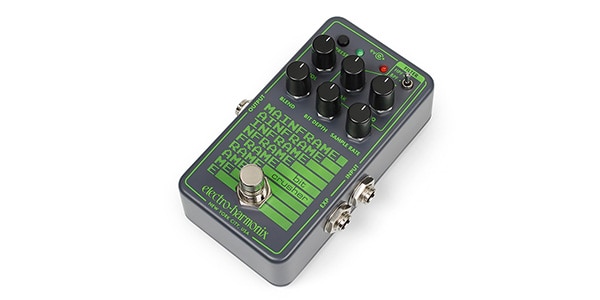
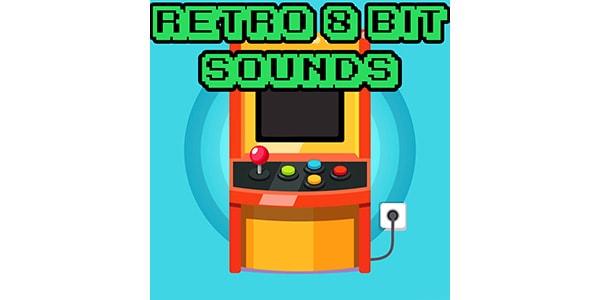




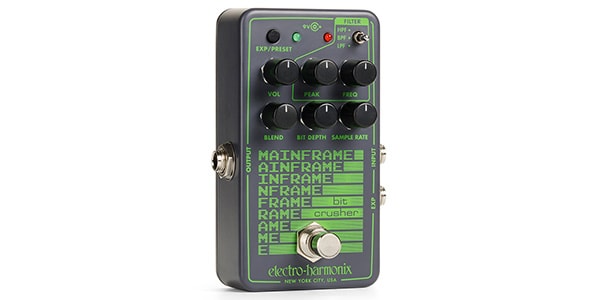
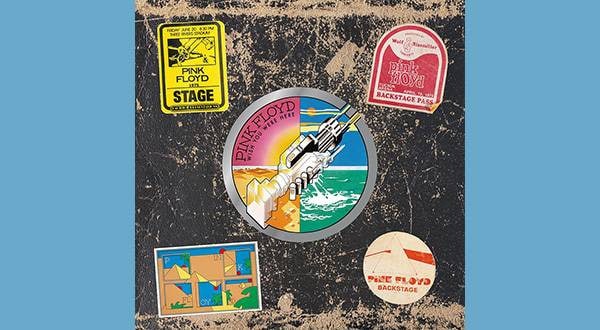
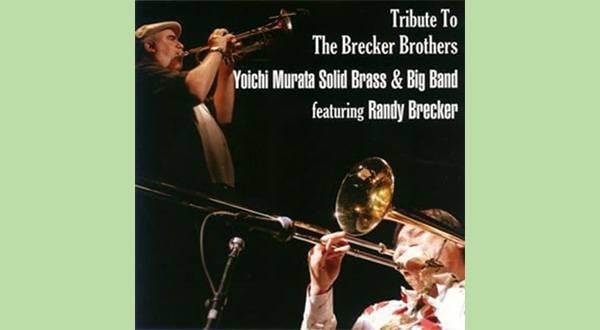
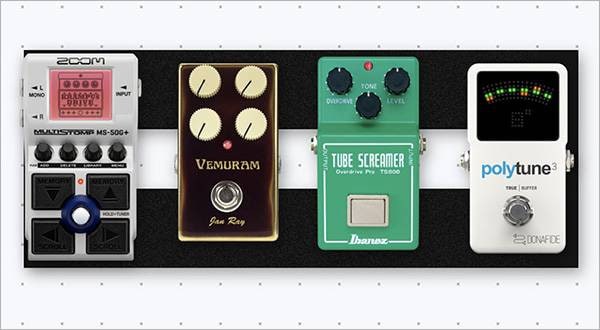
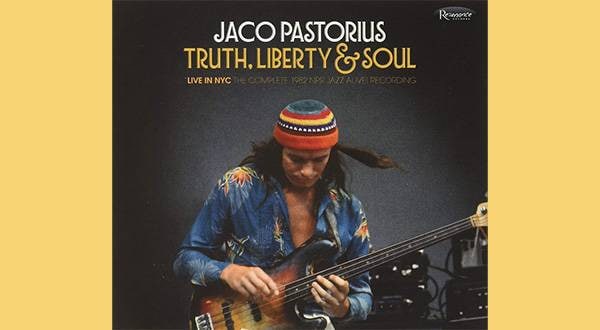
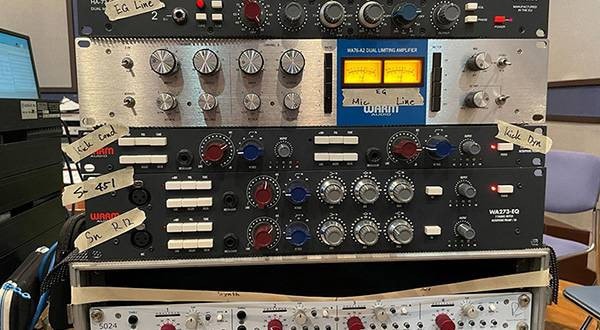
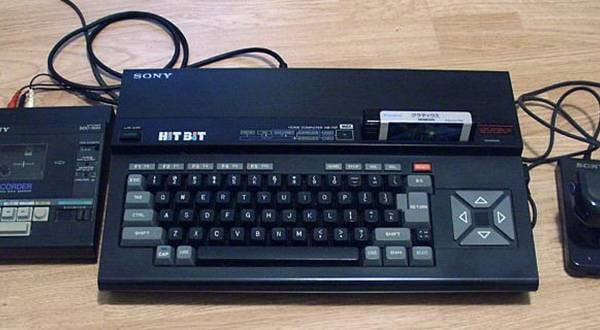
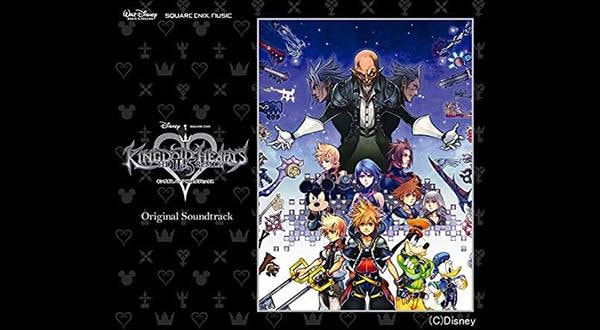
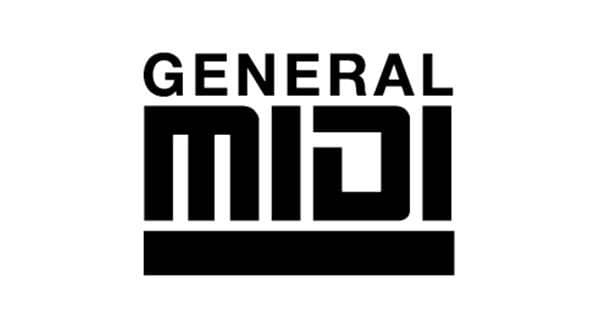
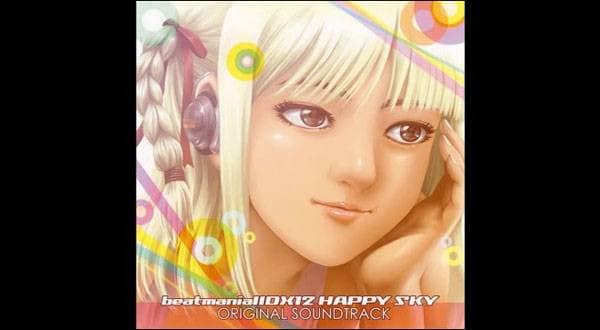
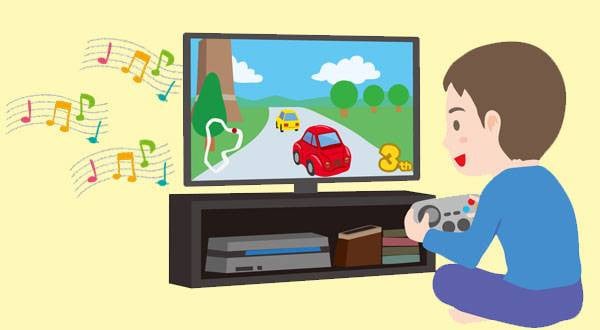
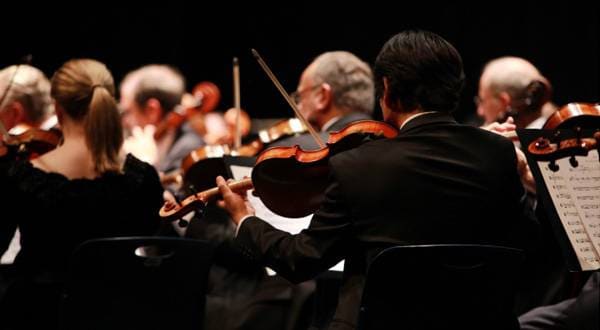
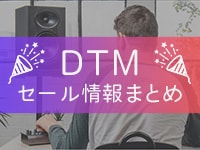 DTMセール情報まとめ
DTMセール情報まとめ
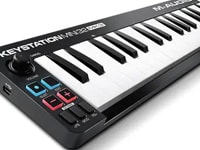 USB接続対応のMIDIキーボード
USB接続対応のMIDIキーボード
 配信・ポッドキャスト特集!(ライブ/動画/ゲーム実況)
配信・ポッドキャスト特集!(ライブ/動画/ゲーム実況)
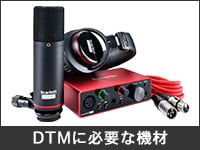 DTMに必要な機材
DTMに必要な機材
 DTM・DAW購入ガイド
DTM・DAW購入ガイド
